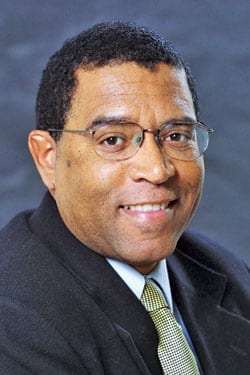
On Aug. 2, 2007, veteran journalist Chauncey Bailey was murdered in Oakland for a story he was working on about Your Black Muslim Bakery, a local business that fronted for an organized crime operation. Bailey’s murder was the first assassination of a journalist over a domestic story in the United States since 1976.
Award-winning investigative reporter and author Thomas Peele spoke with New America Media about his work on the Chauncey Bailey Project — a collaboration of journalists that formed to finish the work Bailey was doing — and his new book, “Killing the Messenger,” that traces the black Muslim movement from its founding to a violent cult-like organization in Oakland that was responsible for Bailey’s murder.
What prompted you to want to investigate Chauncey Bailey’s murder?
I’m aware of journalism history and I was certainly aware of the history of the Arizona Project (created after the 1976 murder of Arizona Republic reporter Don Bolles for a story he was working on involving the Mafia). That was the template — this has got to be done again. It felt like there was little choice. Journalists are in a unique situation to do something when this happens. It was a call to duty type of thing.
Bailey was killed for his work on Your Black Muslim Bakery. Can you talk briefly about his career as a journalist?
Bailey did a hell of a job for the “Oakland Tribune” before his troubles began. He covered the African American community on a multi-daily story basis. He was nothing if not prolific. He’s one of these guys who filled a news hole. He sought out positive stories about the African American community. He always had an agenda to counterbalance the reporting (on the black community) that was out there. He let his personal agenda flow into his reportage.
How did the city respond to his murder?
Until I really researched it for the book, I was surprised that nobody provided a bit of larger context for why the murder happened. Nobody stood up — this was an assault on the First Amendment.
(Former Oakland Mayor) Ron Dellums was so esoteric and disconnected. It might have been difficult for him to do. The police chief (Wayne Tucker) didn’t want to attract attention to the case because he delayed the raid (on Your Black Muslim Bakery) for two days. The district attorney at the time, Tom Orloff — it wasn’t in his political nature to speak publicly. He was a technocrat. These three people who could have provided that larger context didn’t.
The Oakland police also seemed to take a hands-off approach to the killing.
There is a clear record that the police had a policy of disengagement with the Bey family (that led the organization) that stretched a couple of decades. There’s been trial testimony about unwritten policies. Yusuf Bey IV acted with a great deal of arrogance. A week or two before Bailey’s murder, some of his men were seen firing shotguns into the air. Cops were hitting the ground.
Prior to Bailey’s murder, there were two other murders in July 2007. The detective who wrote the search warrant cited 30 to 40 incidents of violent interaction between the police and the Beys in which no arrests occurred. It was a policy of appeasement.
The state of Oakland’s homicide unit in 2007 — there were 10 sergeants, all working double the case load that academics say is acceptable for detectives to do a thorough job. At the same time, there were 30 cops assigned to internal affairs.
What was their response to the Chauncey Bailey Project’s investigation?
We ended up in an adversarial relationship with the Oakland Police Department, which was never covered internally as an institution by local media. We got a great deal of blowback from them. Clearly they were not used to scrutiny and didn’t know how to react when it came.
Given the Beys’ secrecy and reputation for violence, were there any safety concerns among project members?
I always tell people their best reporting tool is common sense. Common sense dictated to be careful. We had basic rules — go in pairs when doing reporting.
Bob Butler one night had an appointment with a guy who had been with the Beys when they were in Santa Barbara. This guy had been wrapped up in an unsolved homicide. We went to his apartment and he said, ‘Come back tomorrow night.’ We worked out this elaborate phone thing with (fellow journalist) Mary Fricker — we’d meet this guy and she would call at five after six (o’clock). We came up with a code word in case things went bad.
Your book delves into aspects of black history and the Nation of Islam. What guided your research?
I set out with the idea of: Let’s get to the bottom of the belief system. We knew that the guy once known as Joseph Stephens (who later changed his name to Yusuf Bey) became the head of Black Muslims in Santa Barbara.
How do these strands come together in the shooting of Bailey?
You have to look at the conditions of people who end up being so horribly exploited. (In the case of Andre Broussard, the shooter in Bailey’s murder) there was nowhere to go. Look at the history of the drug abuse of his mother — he was probably high on heroin in utero.
This is the continuing aftermath of years of horrible oppression in the African American community in Oakland. Less than five years from the end of World War II, abuses were suffered by newly arriving African Americans (who came to work in the factories and shipyards). ‘Cracker cops’ were brought in to police the ghetto — it went bad very quickly.
The city continues to suffer from that many years later.






